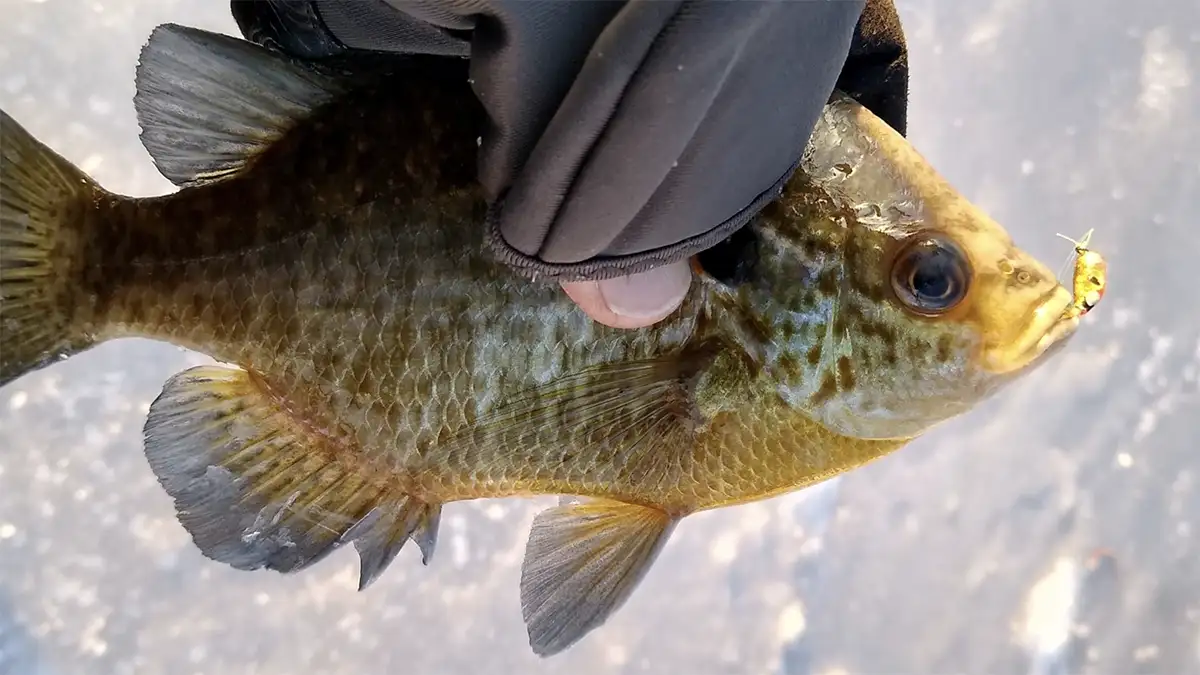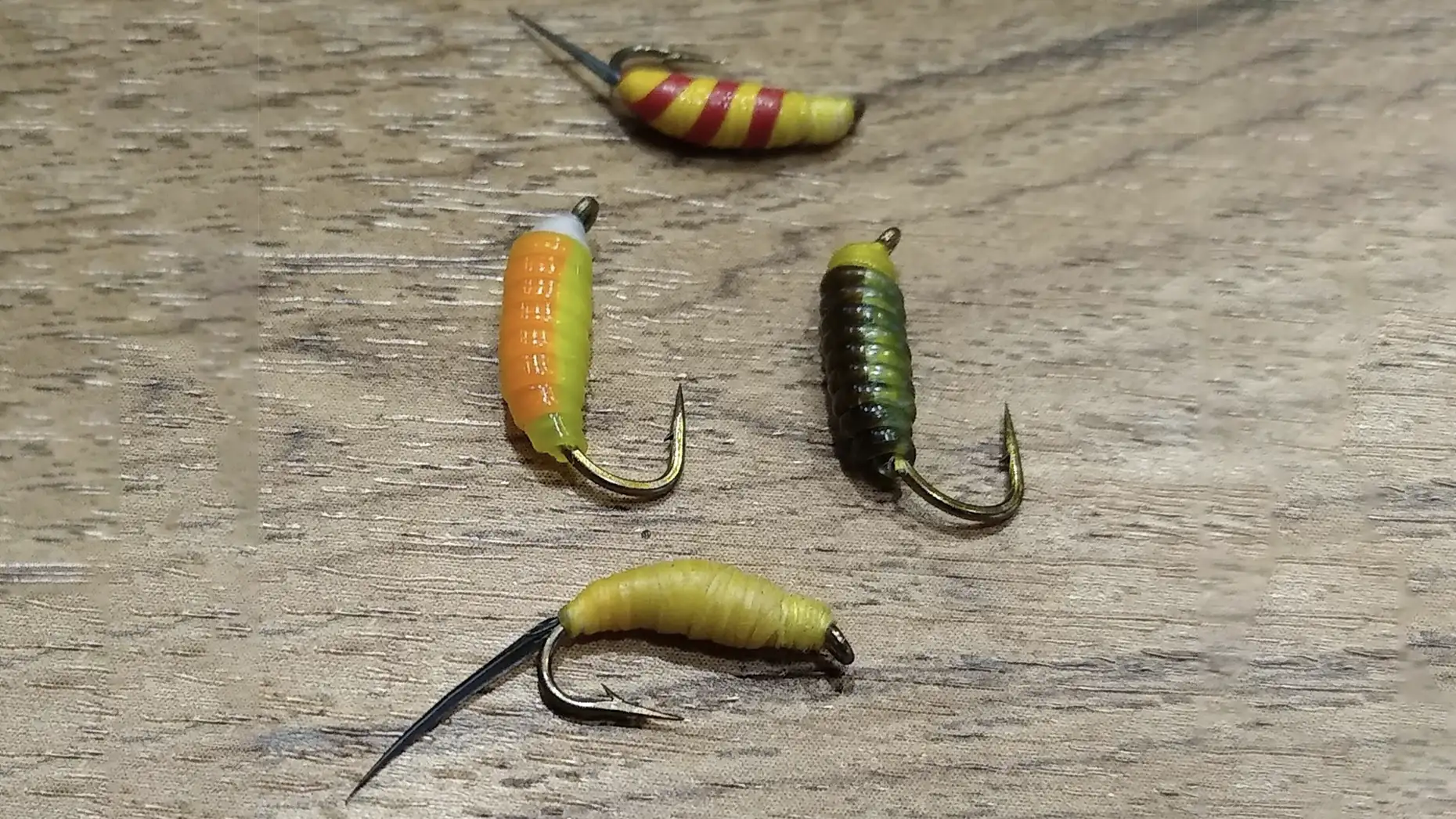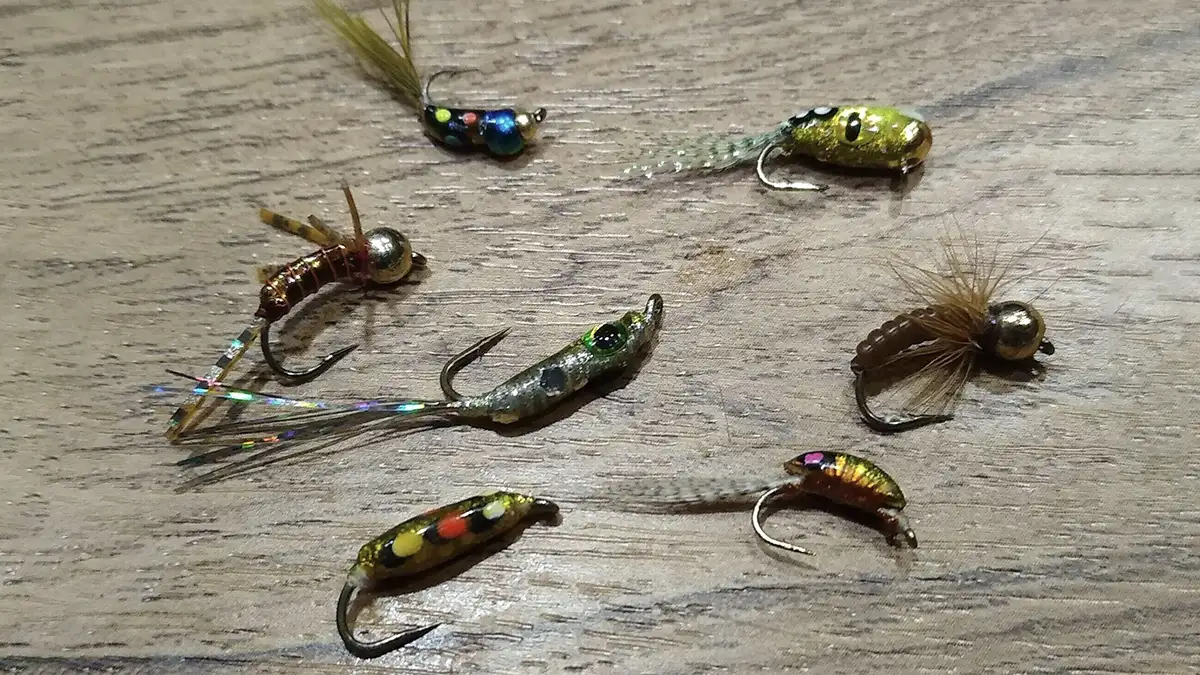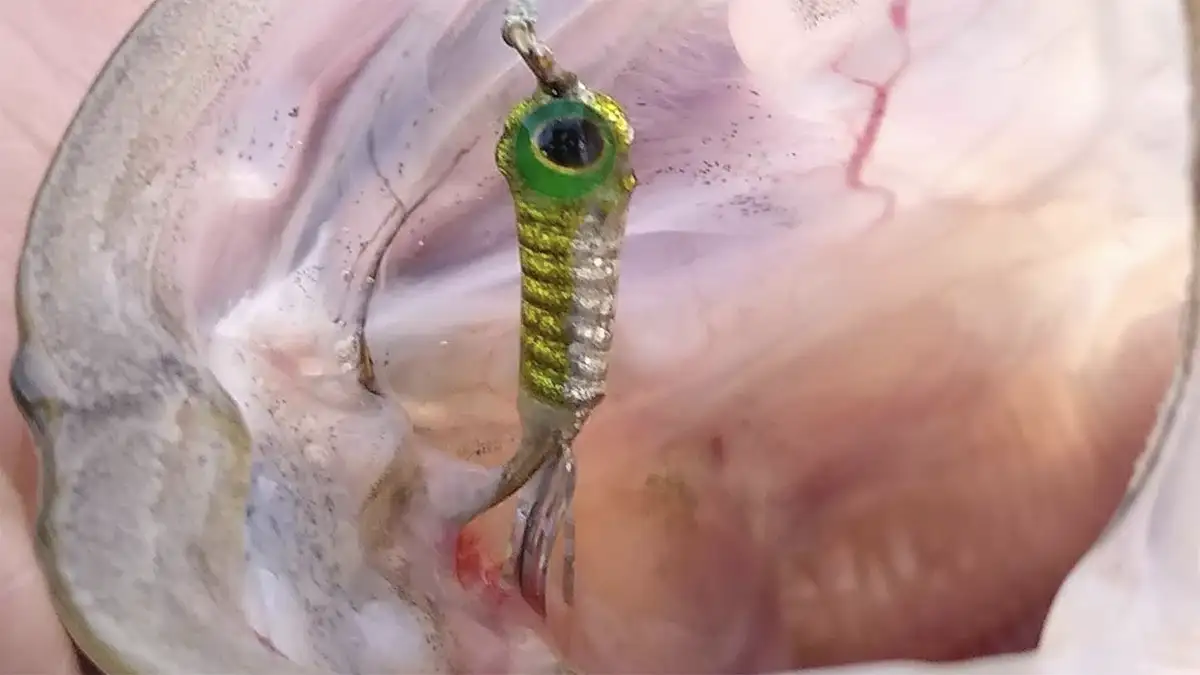You all remember the first time you got out fished by a complete stranger on the ice or in open water? Maybe it has never happened to you, but although it has happened many times over my nearly five decades of fishing, two moments stand out for me as a fisherman and a fly tier. The first moment I remember was on the ice, as I watched a guy pulling in crappie after crappie in a shallow back channel of a lake I fish. I was using a pegged bobber with a dot-style ice jig with some spikes added and not catching much. I asked him what his secret was, and he said a larva lace fly. I had no idea what he was talking about, so I asked what kind of bait he was tipping it with. That’s when he said he was ice fishing naked.
I was still clueless. Having no idea what he was talking about, I tried to get closer, just to get a glimpse. He eventually took pity on me and showed me the fly in question in the only two colors he used, orange over chartreuse and brown over green. However, out of respect for the guy who taught him, he would not tell me how to make them. He did, however, tell me how to fish them once I figured it out. Needless to say, this became my obsession, and although it took me a great deal of time to get it just right, I never looked back, and the art of fooling fish through the ice and in open water without bait has become my passion ever since. I saw the fisherman years later, and I told him how I created these, and although mine looked like his, how I arrived at the answer was way off.
The other was when I was in my 20s fishing a small channel from shore just after ice off and an older gentleman was walking away with a limit of gills before I had caught a handful. Once he showed me what he was using, a hand-tied yellow mousie fly made with strips of balloon, I stopped in a tackle shop on the way home, and I bought my first vice. It started me on a journey as a fly tier that has spanned the distance since and at the time had me searching high and low for all colors of balloons to make his killer fly.
WHY TO ICE FISH NAKED
Most anglers prefer to use bait or put a plastic tail on jigs, and that’s okay. I firmly believe, however, that one can catch just as many fish without bait if they figure out a technique that works for them. For me, another added benefit is that I tend to catch more quality fish when I don’t have a maggot hanging off the back of my fly or jig.
It could just be my bias, but I feel like I catch fewer small fish when I drop the tail or bait. Not only that, but if I can use something that resembles what they are feeding on or something that just looks more aquatic and natural, I often fool some of those finicky fish that just seem to stare at the bait and sometimes those are the true pigs down there. Like those giant red ear that just blow at the bait. If you are a sight fisherman, you know what I’m talking about. Lastly, I can spend more time fishing and less time re-baiting. I don’t have to dig around in my twenty pockets for my bait puck.
HOW TO FOOL THEM WITH NAKED JIGS
Going horizontal is always my first recommendation. This is no different than what most people do with their jigs. Pull the knot toward the point of the hook (set the jig) so that the jig rocks as horizontally as possible when twitched. The straighter the shank of the hook, the more important this is. Curved hooks are less affected by this as the fly or jig tends to rock up on the drop a bit more. If you miss a fish, and they won’t come back, repeat the process or just drop it back and see how they respond. When they are really biting, a horizontal presentation is not always necessary.
The twitch rate and cadence is unfortunately something you will have to play around with. Luckily with most guys using flasher units and more advanced fish finding technology, gauging the reaction that fish are having to what you are doing is much easier. My typical technique is to drop it down to where the fish are showing up on my flasher, stop it just above them and then twitch the rod lightly and constantly as I slowly raise the rod tip slowly away from the fish, and it works great. It’s not a bad idea to drop the fly slowly a foot or two at a time under the ice and twitch it as you go down and watch for the line to go slack. Sometimes we can’t see the slabs hugging the ice with our flashers.
HOW TO DETECT THE BITE
There are a few options here: find that perfect spring bobber, be a line watcher or lean out and sight fish. I make my own spring bobbers out of the spring from a Bic lighter (the one on the bottom) or a loop of 10-12 pound test monofilament. These are both perfect for detecting the lightest of bites, but there are tons of options out there.
Although I prefer one with a spring involved like a St. Croix Super Finesse Spring Bobbers or a Lite Byte Spring Bobber, there are many titanium options from Ice Strong, Rapala, and Frostbite. However, when I’m fishing something lighter than tungsten and it does not show up on my flasher well, I use hi-vis gold or yellow line and watch for a twitch or tightening of the line. It’s not a bad idea to make a kink in the line so you can see the vee straighten on the strike as you are lifting the jig. Lastly, since ice fishing naked works great in shallow water, a little sight fishing is not only fun, but it will do wonders for figuring out the jiggle and seeing how fish are relating to the bait.
WHAT TO USE
I know that now more than ever guys are standing around talking about how many millimeters of tungsten they are working with, and let’s face it, tungsten jigs and flies really changed the game with sensitivity and down time. Our bait is in the strike zone much longer when we aren’t waiting for our jig to get down, and we can detect bites better.
To this end, there are lots of great tungsten ice fly options out there that would be perfect for his technique. A few of the many options are Simcoe bugs, Starky Flies, and 3 Brother’s Flies.
However, don’t be afraid to go with small, size 12, or smaller old-school, lightweight offerings. Crappie and gills cannot resist something that drops slowly, so a larva-lace style fly or even your favorite summer nymph pattern with a body wrapped in lead or with a small brass bead would work perfectly especially in water 10ft or shallower. It might kill you to have your jig or fly drop at a snail’s pace and not show up on your electronics, but the benefits are well worth it.
Regardless of what you use, try to make it something that resembles what they might see in the weeds. I prefer leggy creatures, freshwater shrimp patterns or minnow imitations. I personally like darker colors like olive or brown and something with a bit of a feather tail or some flash in the tail as it can add some wiggle, and it catches the water as the fly drops for better horizontal balance.
BEST RODS FOR ICE FISHING NAKED
As far as rods go, just about any panfish ice fishing rod will work with this; however, I prefer a 24-inch ultralight set up with a fast-action tip on windy days or if I have to bust out the ice shelter. I tend to use fine wire hooks, so I can get better penetration with light line, so if I use something too stiff, I am likely to rip the hook out if I am too ambitious with my hookset.
When I am hole hopping, my go-to is a custom 5-foot ultralight set up. It allows me to stay back from the hole a bit so as not to. Also, with a light spring bobber attached, it is the perfect weapon for this type of presentation since I can slowly lift the fly several feet in one swing to provoke a chase or see if there are any fish hanging out a bit higher in the water column. It also maximizes the amount of time I am in the water as I don’t have to reel when I am fishing 8 feet deep or less.
WHERE TO ICE FISH NAKED
Although tungsten has expanded the depth of this technique, it works great in water less than 10-12 feet. I look for pockets in the weeds in shallow, weedy flats or weed-lines adjacent to deeper water.
If you like what you do and are having success, then don’t fix what isn’t broken, but if you like a bit of a challenge that will reap great benefits, drop a naked jig or fly down a hole and spend some time fooling some fish. I think you’ll be glad you did.
















